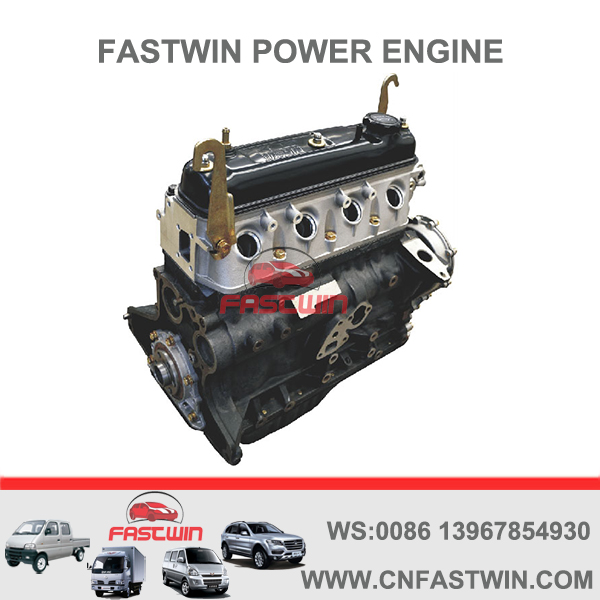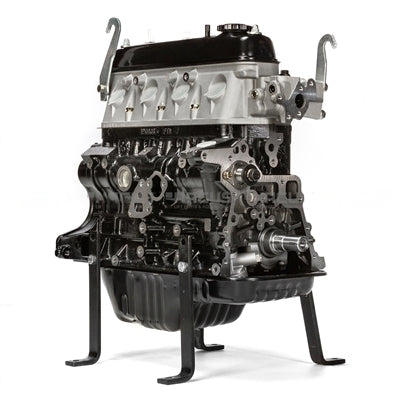How the 4Y Engine Compares to Other Engines in Terms of Fuel Efficiency
How the 4Y Engine Compares to Other Engines in Terms of Fuel Efficiency
Blog Article
Why the Engine Is the most effective Selection for Performance and Efficiency in Your Cars And Truck
The engine continues to be a crucial element in automotive style, primarily because of its significant influence on both efficiency and efficiency. As innovations in technology make it possible for smaller engines to provide impressive power while optimizing gas economy, the combination of attributes such as turbocharging and hybrid systems comes to be progressively vital. These technologies not only improve driving experience but additionally address environmental worries. The question occurs: exactly how do these components coalesce to redefine our understanding of automobile efficiency? Discovering this equilibrium reveals deeper understandings right into the future of engine design.
Understanding Engine Types
Understanding the different kinds of engines is crucial for optimizing performance and effectiveness in auto design. The key engine types consist of inner combustion engines (ICE), electric engines, and hybrid systems, each offering unique benefits and constraints.
Internal combustion engines, which can be additional classified right into gas and diesel variations, depend on the combustion of fuel to produce power. Gas engines generally give greater RPMs and much better velocity, while diesel motor are known for their torque and gas efficiency, making them optimal for durable applications.
Electric engines, on the various other hand, use electric motors powered by batteries or fuel cells. They provide instant torque shipment, resulting in smooth acceleration and lower discharges. The effectiveness of electrical engines is dramatically greater than that of ICEs, making them a popular choice for eco-conscious consumers.
Hybrid systems combine both interior combustion and electric engines, leveraging the strengths of both technologies. They maximize fuel consumption by utilizing electrical power at reduced rates and switching to gas or diesel for greater speeds or larger loads.
Picking the best engine kind is necessary for attaining desired efficiency metrics and environmental sustainability in contemporary automotive engineering.
The Influence of Engine Size
Engine size often plays an essential duty in determining a vehicle's efficiency and effectiveness. Usually gauged in liters or cubic centimeters, engine size directly influences the power output and torque qualities of an automobile.
Nonetheless, raised engine size frequently associates with reduced gas performance. Bigger engines eat more fuel, resulting in greater exhausts and functional costs. As a result, suppliers should stabilize the need for power with the requirement for gas economic situation. Smaller engines can provide adequate performance for daily driving while advertising better efficiency, making them a popular choice in mid-size and small lorries.
Furthermore, advancements in engine style, such as turbocharging and direct fuel shot, allow smaller sized engines to attain power degrees similar to their larger equivalents. This pattern emphasizes the importance of not solely concentrating on engine size but also thinking about overall vehicle layout and modern technology (4y engine). Eventually, the impact of engine dimension on efficiency and effectiveness highlights the need for consumers to examine their particular driving preferences and needs when selecting an automobile
Advanced Engine Technologies
Technologies in engine innovations have actually significantly reshaped the landscape of auto performance and efficiency, building upon the foundational principles developed by engine dimension. Especially, improvements such as turbocharging and direct fuel shot have made it possible for smaller engines to provide power degrees formerly related to larger equivalents. Turbochargers press air getting in the engine, enabling boosted power result without a matching rise in engine dimension, while direct injection maximizes fuel shipment, enhancing burning performance.
In addition, variable shutoff timing systems have actually emerged he said as an essential innovation, permitting engines to readjust valve procedure based on driving problems. This flexibility boosts both efficiency throughout velocity and fuel performance throughout cruising. Crossbreed and electric engine innovations even more highlight the shift in automobile design, combining standard internal combustion engines with electrical motors to take full advantage of effectiveness while lowering discharges.
Moreover, improvements in products science have actually resulted in lighter, a lot more resilient engine components, even more improving performance and durability. The assimilation of advanced electronic devices and engine control systems also enables real-time modifications, ensuring ideal performance across various conditions. Jointly, these innovative engine innovations not only boost lorry performance but likewise contribute to a much more sustainable vehicle future, demonstrating the continuous development of engine design.
Balancing Power and Efficiency
Striking a balance in between power and efficiency is important in contemporary automotive layout as producers look for to fulfill significantly strict discharges regulations while satisfying consumer demand for efficiency (4y engine). The difficulty hinges on enhancing engine characteristics to provide durable power result without sacrificing gas economic climate
To attain this balance, designers employ different strategies, such as turbocharging, which improves engine power forcibly in more air, enabling a smaller engine variation that improves gas performance. Variable shutoff timing technologies likewise play a substantial duty, making it possible for engines to adjust their efficiency features based upon driving problems, therefore enhancing both power and performance.
Moreover, developments in products and producing techniques have actually caused lighter engine components, which lower overall automobile weight and improve gas performance without compromising power. Hybrid technologies have additionally emerged as a viable option, combining standard interior combustion engines with electric powertrains to give an increase in performance while keeping lower emissions.

Future Patterns in Engine Layout

Moreover, the growth of innovative materials, such as lightweight composites and anonymous high-strength alloys, is readied to revolutionize engine parts. These materials not just reduce weight however likewise boost thermal effectiveness, consequently optimizing efficiency. Additionally, suppliers are checking out variable compression proportions, enabling engines to adjust to various driving conditions, enhancing both power result and gas economic climate.
Even more, the increase of fabricated intelligence and maker knowing in engine design is allowing anticipating upkeep and real-time performance optimization. This modern technology can result in engines that self-adjust for maximum performance based on driving patterns.

Final Thought
Finally, the engine functions as a critical component in achieving ideal efficiency and effectiveness in modern-day vehicles. Advanced innovations, such as turbocharging and crossbreed systems, enhance power try this website result while decreasing fuel usage and discharges. The interplay between engine dimension and design remains to develop, driving technologies that balance electrifying performance with environmental sustainability. As automobile engineering proceeds, the emphasis on developing reliable, powerful engines will stay vital fit the future of transport.
Additionally, innovations in engine design, such as turbocharging and straight gas injection, permit smaller engines to achieve power degrees similar to their larger counterparts.Innovations in engine innovations have significantly reshaped the landscape of automobile efficiency and efficiency, building upon the foundational concepts established by engine dimension. Turbochargers press air going into the engine, allowing for enhanced power outcome without a corresponding increase in engine dimension, while direct shot maximizes fuel distribution, improving burning efficiency.
Hybrid and electrical engine innovations additionally show the shift in auto design, incorporating standard inner combustion engines with electrical motors to make best use of efficiency while minimizing discharges.
Collectively, these innovative engine technologies not only boost lorry efficiency however likewise contribute to a much more sustainable automotive future, demonstrating the ongoing development of engine style. (4y engine)
Report this page